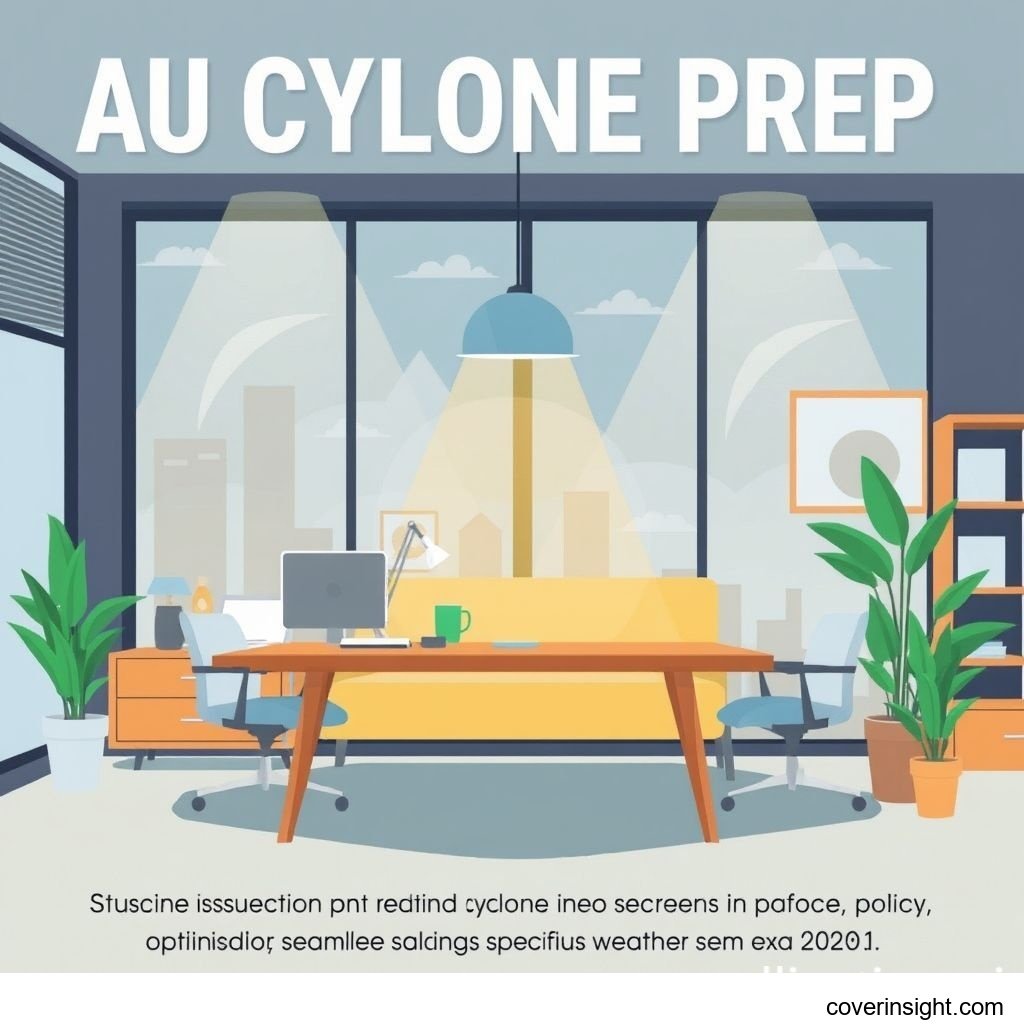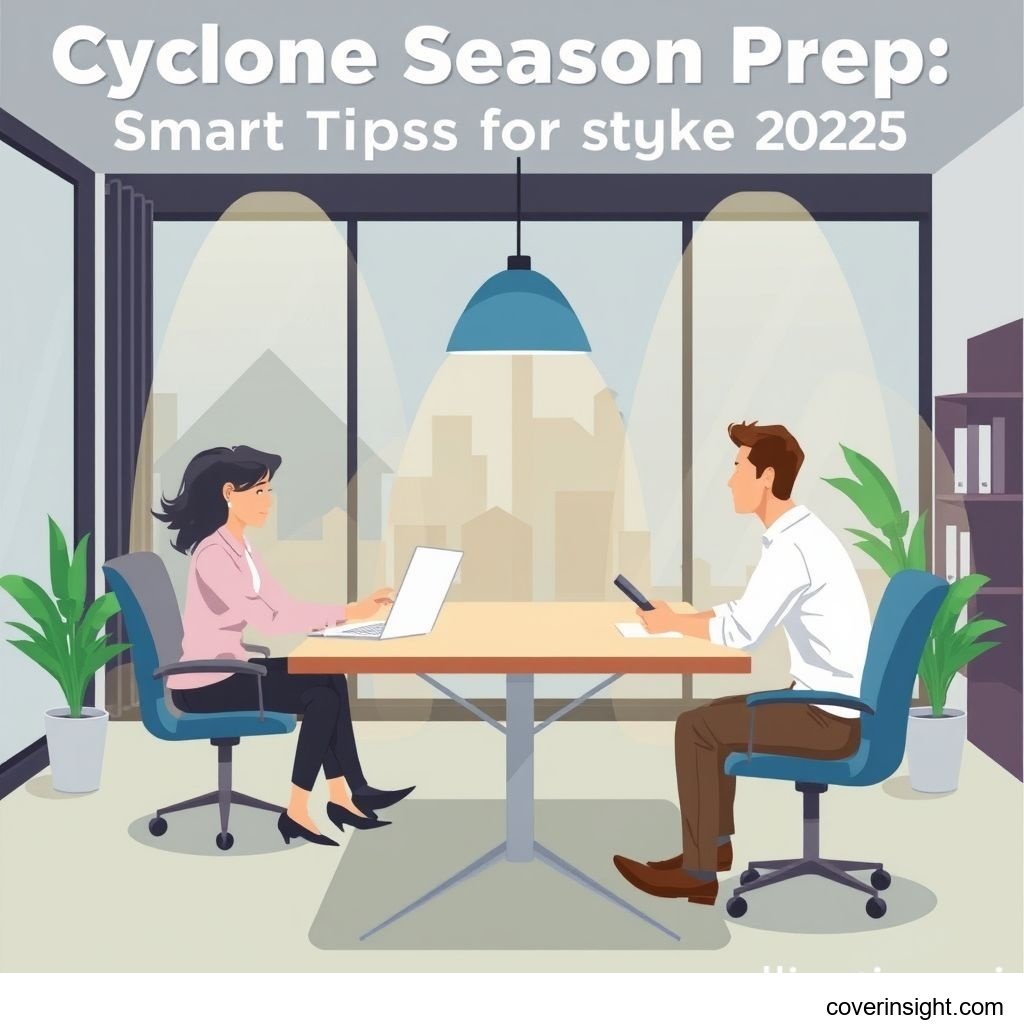Essential AU Cyclone Prep Guide 2025: Stay Safe
Introduction
As the calendar inches closer to 2025, it’s high time for residents across Australia’s cyclone-prone regions to start battening down the hatches. Cyclone season preparation isn't just a suggestion down under; it's a vital annual ritual that can quite literally mean the difference between bouncing back quickly and facing a long, arduous recovery. From the tropical north to the Queensland coast, understanding what it takes to protect your home and loved ones is paramount. This guide is designed to help you navigate the essential steps, ensuring you're not caught off guard when the big one rolls in.
Coverage Details
Navigating the complexities of cyclone season preparation involves more than just stacking sandbags. It's a holistic approach that intertwines physical safeguarding with crucial financial protection.
What’s Included
Effective cyclone preparation encompasses two main pillars: physical readiness and comprehensive financial coverage. On the physical front, this includes securing loose items around your property, trimming overhanging branches, cleaning gutters, and having a robust emergency kit packed with essentials like water, non-perishable food, first-aid supplies, and important documents. For those with a bit more foresight, investing in cyclone shutters or reinforcing garage doors can make a real difference.
From an insurance perspective, standard home and contents policies in cyclone-prone areas usually include coverage for damage caused by strong winds, heavy rain, and hail associated with a cyclone. This typically extends to structural damage to your home, loss or damage to your personal belongings, and sometimes even temporary accommodation if your home becomes uninhabitable. Many policies also cover debris removal. To explore broader financial resilience, you might find useful insights from our collective "Insurance Resources Global", or specifically for local context, refer to "AU Insurance Home".
Common Exclusions
While policies offer significant protection, it’s vital to be aware of common exclusions. Damage from storm surge, which is often a separate peril from wind, might require specific flood insurance or an add-on, as it’s frequently excluded from basic cyclone coverage. Similarly, land slippage or erosion caused by heavy rains might not be covered. There's also the "waiting period" to consider; you generally can't take out or increase your insurance cover in the days immediately before a declared cyclone event or if one has already formed and is tracking towards your area. Pre-existing damage, or damage resulting from a lack of reasonable maintenance, will also typically be excluded from claims.
Cost Analysis
Understanding the financial aspect of cyclone preparation is crucial for effective budgeting and peace of mind.
Price Factors
The cost of effective cyclone season preparation, particularly concerning insurance, can vary wildly. Key factors include your property's location (coastal areas in North Queensland, for example, often face higher premiums due to increased risk), the age and construction materials of your home, and its proximity to waterways. Your claims history, chosen sum insured, and the excess (deductible) you're willing to pay also play a significant role. For instance, according to data from the Insurance Council of Australia (ICA), premiums in cyclone-exposed regions can be notably higher than in less risky areas, reflecting the genuine financial exposure insurers face.
Saving Tips
When it comes to saving a few bucks without compromising safety, there are several avenues to explore. Increasing your excess will typically lower your premium, but be sure you can comfortably afford the higher out-of-pocket expense if you need to claim. Bundling your home and contents insurance with the same provider often unlocks discounts. Some insurers also offer incentives for proactive mitigation efforts, like installing cyclone-rated shutters or having a well-maintained roof. Always shop around and compare quotes from multiple providers; it's a competitive market out there, and what suits your neighbour might not be the best fit for your circumstances.
FAQs
How much does cyclone season preparation cost? The cost is a mixed bag. Physical preparation (emergency kit, securing property) can range from a few hundred dollars to a couple of thousand if you're investing in structural upgrades. Insurance premiums, which are a major component of financial preparation, can range from a few hundred to several thousand dollars annually, depending on your location, property type, and chosen coverage.
What affects premiums? Premiums are influenced by your property's location (proximity to coast, flood zones), its construction (materials, age, condition), your claims history, the level of cover you select, and the chosen excess. Local councils sometimes provide data on specific hazard zones, which insurers factor in.
Is it mandatory? Physical cyclone preparation, while not legally mandatory, is highly recommended by emergency services and local governments. Home and contents insurance itself isn't mandatory by law, but if you have a mortgage, your lender will almost certainly require you to have adequate building insurance. Going without insurance is a massive gamble, plain and simple.
How to choose? When choosing insurance, look beyond just the price tag. Compare policy wording carefully, paying close attention to inclusions, exclusions, and the excess amount. Check the insurer's claims reputation and customer service. For instance, the Australian Prudential Regulation Authority (APRA) provides oversight of general insurers, ensuring their financial stability, which can offer some peace of mind. Consider your personal circumstances, risk tolerance, and what assets you need to protect.
Consequences of no coverage? The consequences of not having adequate insurance coverage for cyclones can be financially devastating. Without it, you'd be personally responsible for the full cost of repairs to your home, replacing damaged belongings, and any temporary accommodation. This could amount to tens or hundreds of thousands of dollars, potentially forcing you into significant debt or even financial ruin. We've seen firsthand how communities can struggle when individuals lack adequate protection after a major event. After Cyclone Yasi in 2011, for example, communities that were underinsured faced significantly longer and more arduous paths to recovery, highlighting the brutal reality of being caught without a financial safety net.
Author Insight & Experience: As someone living in AU's tropical north for years, I've had my share of close calls and direct hits with cyclones. Based on my experience, the sheer power of these weather systems is humbling. What often separates a swift recovery from a prolonged nightmare isn't just the physical damage, but the financial preparedness. I've witnessed neighbours who, after a cyclone, found themselves in dire straits because they either didn't have insurance, or their policy had critical gaps. It’s not just about protecting bricks and mortar; it’s about safeguarding your future and your family’s wellbeing. Taking the time now to properly prepare, both physically and financially, is truly one of the best investments you can make.








Comments